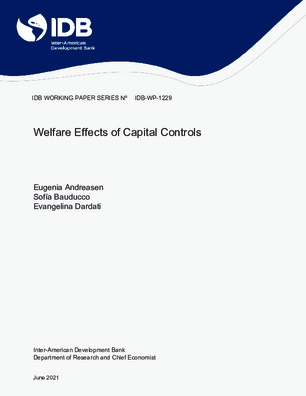Welfare Effects of Capital Controls
Date
Jun 2021
This paper studies the effect of capital controls on misallocation and welfare in an economy with financial constraints. We build a general equilibrium model with heterogeneous firms, financial constraints and international trade and calibrate it to the Chilean economy. Since high-productivity and exporting firms need to borrow more to reach their optimal scale, capital controls that tax international borrowing hit them harder. As a result, misallocation increases relatively more for this group of firms, and for young firms that are still trying to reach their optimal scale. In terms of welfare, the model predicts a sizable aggregate loss of 2.39 percent when capital controls are introduced, with welfare decreasing twice as much for high-productivity firms. We empirically corroborate the main insights in terms of misallocation obtained from the model using Chilean manufacturing firm data from 1990 to 2007.




